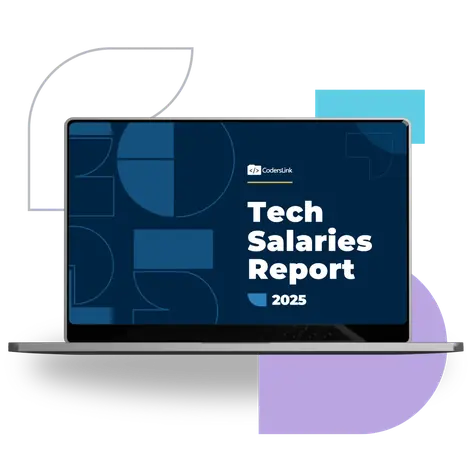
Previously on Remote Manager Series: Part 2 – Managing Performance
It might sound easy, but planning is one of the fundamental pieces of getting a team working in unison towards a single goal. There are many frameworks available to help you go through the planning process, but the one thing in common they share is that they bring together a collaborative approach.
It’s easy to think about creating an executive plan and asking your department heads to communicate it down to their teams based on the quarterly or monthly reports produced. While that might work in theory, it’s completely different in practice.
Tackling the Quarterly planning giant
This is the toughest planning session of them all. To tackle the session, it’s all about taking a piecemeal approach towards completion to make it digestible for everyone and to keep ideas and creativity flowing.
Never step into a meeting without data, insights, and conclusions.
As a manager you should strive to make every remote meeting as productive as possible, keeping ‘dead time’ to the minimum. ‘Dead-time’ is time spent in a video conference where one person is looking for a specific piece of information that is needed to advance in the middle of a meeting, while everyone else waits patiently.
How do you accomplish that? Pre-work.
Breakdown your quarterly planning meetings and require every team member to complete pre-work before coming into the meeting. No excuses.
It not only makes meetings more productive, but it also provides a window for identifying areas of opportunity whilst gathering the information that they otherwise might’ve missed when rushing to gather specific data in the middle of a meeting.
Include everyone in your team in the meetings.
This is a must when working remotely. As a remote team we’re built in silos and not being aware of what is being worked by other team members leads to misunderstandings on time tables and delayed initiatives.
Avoiding this is simple enough; have every member of your team participate in the planning sessions. Even if they spend their time just hearing the conversation, it will give them the complete context of what’s happening in other areas of the department and when.
This leads to active collaboration and 360 awareness from everyone in the team. A nice secondary effect to this is idea sharing – as other team members pitch in with new and fresh ideas as to how to approach a common goal. It will additionally create buy-in and accountability from everyone in the team, as they are all involved in creating the plan.
Finally, have a shared planning document, where everything is consolidated. The department head should share their screen and walk through the document, with direct reports filling in the details as the meeting progresses.
Here’s our formula:
- Quarterly department planning split into two 1:30 sessions
- First session for reviewing what went right, what can be optimized, what went wrong, and where we can improve overall.
- Second session about creating a proposal for the next quarters’ objectives based on a 20-30% increase from the previous period. Dialing into the details of every area and what initiatives can help us drive our goals.
- Mandatory all-hands sessions – everyone in the department must attend
- Every session must have everyone in the department if you aren’t talking you’re expected to be actively listening and taking notes.
- Complete pre-work before each session
- Pre-work for the first session includes what will be discussed in the meeting. There’s no ‘thinking’ time during the meeting. We get there to discuss findings.
- Pre-work for the second session includes specific proposals on initiatives that can deliver on our goals and what it takes to bring those proposals to life.
- Quarterly document shared and broken down like so:
- Funnel KPIs for the past four quarters
- Next quarter’s proposed objectives
- Next quarter’s initiatives breakdown
Why do we take this approach?
As we mentioned above we’ve specialized in using OKRs as our framework for setting goals and objectives.
For our quarterly planning, we don’t start at the executive level and layer down our goals to departments and then to the different areas. We do the exact opposite, we start by creating an analysis and proposal from our areas to present to our department heads to understand what’s happening at the ground level. Focusing on creating a 20-30% growth from the last period with actionable steps.
This allows us to really know what’s happening in the trenches and what goal we can tackle next that is not only challenging but attainable. We then take that to the executive level and take a look at our yearly vision to set the main quarterly objectives and use our department’s reports to see how we can reach them.
This helps us understand several things about our team’s capacity:
- Can we achieve our goals with our current team?
- Do we need to add new skills or more hands?
- Do we need to modify our budgets, particularly in marketing, sales, and technology?
Throw around ideas digitally – take brainstorming sessions online.
Brainstorming sessions are usually thought of as long sessions sitting in a conference room with a whiteboard full of notes, diagrams, and explanations. While one might think that those are thrown out the window when we turn into remote work, the reality is that as a manager you must adapt these to keep innovation going.
With the rise of real-time collaborative tools, there’s a lot of services that can help you replicate the above-mentioned situation.
Remote brainstorming is laser-focused.
In comparison to in-person brainstorming sessions, remote sessions must be laser-focused. It will ensure everyone has time to share their ideas and for them to be discussed in-depth to be worth the meeting.
That doesn’t mean they must be kept short, it means that as a manager you should aim to split your sessions for answering a specific question or questions, depending on what the meeting is called for.
If a challenge is too daunting or seems to be too hard to tackle, try breaking it down into smaller problems. Think through your problem with these questions:
- What needs to happen for this problem or challenge to be solved?
- How many different ways can I solve this?
- Is this the smallest problem I can fix? Is there a way to make progress towards a bigger challenge by solving something smaller?
Keep documentation of your meetings, action items, and conclusions as you progress through the different sessions. Share this with everyone in your team as long as it’s in process.
Make sure to document the final outcome of the brainstorming session with the next steps and those responsible for its implementation.
For remote managers leading a planning session, the difference between an in-person meeting and a remote meeting is mostly about how to create spaces that ensure that the best work is done. The key lies in breaking them down into attainable efforts, using pre-work as your main tool to be productive, and ensuring everyone has their say in the conversations.
Next in our series: Remote Managers Part 4 – Hire someone without ever meeting them in person.
Build a tech team that delivers projects on-time.
Getting to your milestones means more users, more funding, and better tech overall. A tech team doesn’t have to mean technical debt or exorbitant expenses. Get your copy of our Building Remote Tech Teams to see how nearshoring can help your company.



